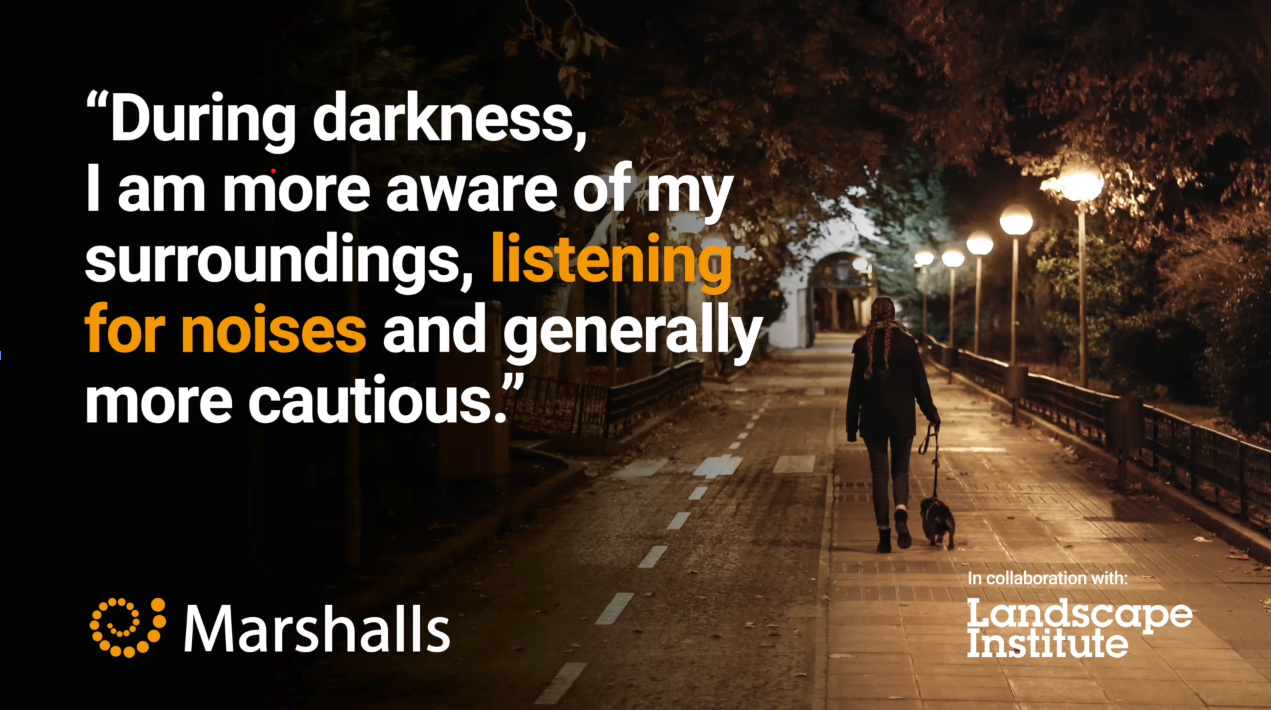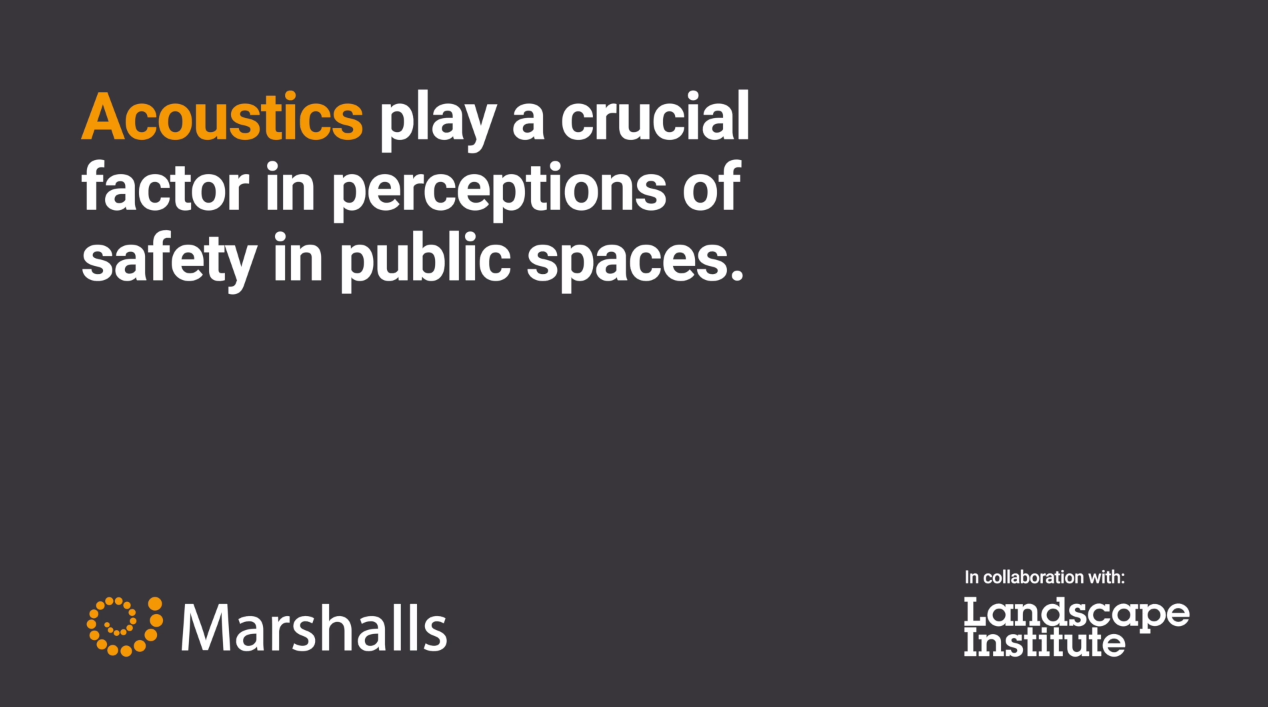The sonic environment is an invisible but crucial factor affecting how people interact with a space. Its most significant impact is on how safe we feel. Yet, it’s also an essential consideration regarding physical safety, given that some sounds might mask anti-social or criminal behaviour.

While design advice and building regulations often focus on managing acoustics within buildings, the importance of soundscape quality is not often a critical concern in public realm design.
What do people say about the impact of acoustics on how safe they feel in public?
Creating an enjoyable and safe soundscape in public spaces should be essential to public realm design. Research has demonstrated that certain ambient sounds – such as bird song or human voices – can help create social presence and a feeling of safety. In contrast, artificial nuisance sounds, such as loud traffic, can have a drastic negative impact. Designers need to make these considerations and be aware of the potential impact of noise on the perception of safety within a public space.
The Marshalls Safer Spaces survey showed that unwanted noise becomes more problematic at night. More than 30% of research respondents considered their awareness of sounds when out and about in public spaces during darkness. People feel less secure wherever sensory input – such as vision – is restricted, through poor lighting or in cramped spaces. This means that designers should strive to harmonise all design elements and achieve balance, allowing lower volume and recognisable sounds while not overwhelming the users of the area or masking noises that might alert people to potential danger. With the right approach, the acoustics of a space can help ensure the safety and enjoyment of those who use it.

Designing safer spaces – our recommendations for acoustics
So when it comes to designing future spaces, what can we do to improve acoustics to ensure people feel, and are, safer? The following design considerations are within the Creating Safer Spaces whitepaper, available to download now.
Bring together hard and soft surfacing
When considering design elements, thinking about how soundwaves behave when interacting with surfaces is essential. Generally, the design principle would be to avoid too much reflection, reducing excess reverberation or echo that might create a sense of unease within the space. Using textured materials on surfaces can also help reduce reflection, absorbing more sound. Angles of more prominent hard landscaping elements such as high walling or seating should also be considered; high semi-circled smooth concrete walls, for instance, might direct excessive amplified sound to a focused point within a space.
Of course, even where we use larger expanses of hard landscaping, potential acoustic issues can be mitigated through vegetation and planting, carefully placed throughout the space to ‘noise block’. Plant density is the key here, with thicker, more tightly packed greenery offering more significant noise reduction. Evergreen shrubs are an excellent way to offer consistent protection.
Sonic Flow
Designers can consider introducing ‘overlay’ sounds that mask unpleasant acoustics when plants don’t reduce noise enough. Flowing water is very effective here, with streams, water fountains and other features providing a recognised calming effect.
A physical manifestation of sonic design
Physical representations of soundwaves could also be considered in public realm designs, mainly where unwarranted noise, such as high traffic areas, is a specific challenge. Marking areas of potential acoustic interest should raise consciousness around the importance of this critical design component.
A fantastic exemplar project is the Light Neville Street sonic art installation. Led by Bauman Lyons Architects & sonic artist Hans Peter Kuhn, this multi-million-pound project saw the transformation of a major gateway into Leeds city centre, which was previously just a dark tunnel. Designed to improve the safety and enjoyment of the space, light and sound elements come together to brighten the walkways and mask the noise of the train station above.
The 24-hour soundscape
The 24-hour soundscape should be evaluated during the site survey stages of public realm design. While noise consideration is always part of any initial developmental research, there is seldom a focus on designing for dark.
Conducting site surveys both during the day and at night enables a better identification and analysis of sound sources. ISO 12913-1:2014 provides a useful conceptual framework for the planning, design and management of soundscapes and explains the factors most relevant for measurement and reporting.
Further learning about creating safer spaces
As well as the whitepaper, you can now book our Creating Safer Spaces CPD, allowing you to use the insight and pillars for future space design. The session lasts an hour and can be delivered online or in person.



